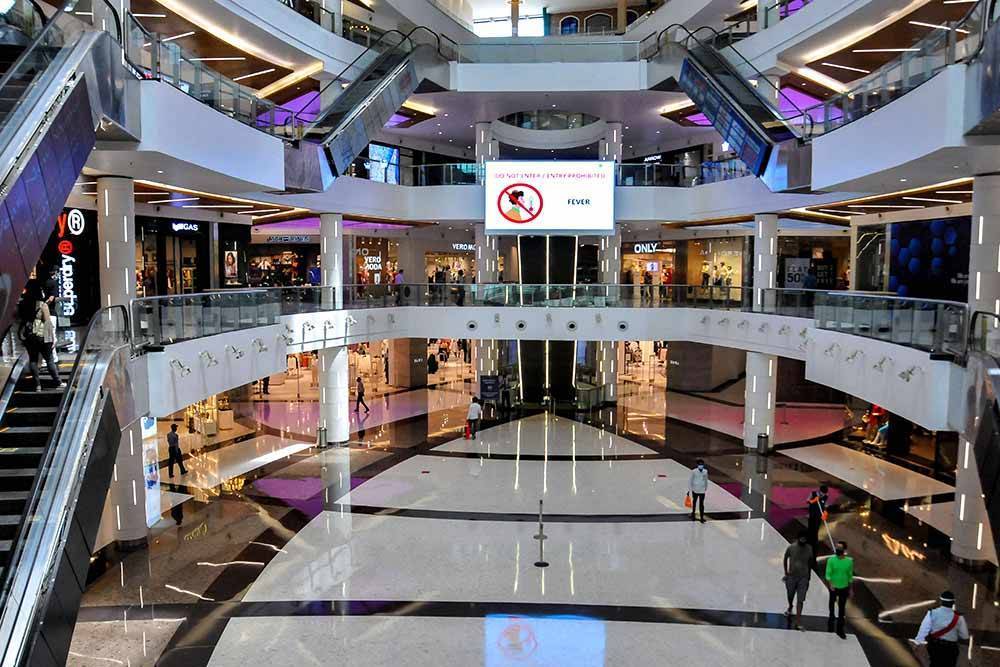In recent years, India's real estate sector has experienced a concerning trend: the emergence of ghost shopping centres. These low-performing malls, characterised by a vacancy rate exceeding 40%, have witnessed a substantial increase, with a staggering 59% year-on-year rise, encompassing approximately 13.3 million square feet of retail space. This phenomenon, highlighted in the Knight Frank India report titled 'Think India Think Retail 2024: Shopping Centre and High Street Dynamics Across 29 Cities,' presents significant challenges for the retail industry and the broader economy.
Understanding Ghost Shopping Centres:
Ghost shopping centres are essentially underperforming malls that exhibit a vacancy rate exceeding 40%. These malls, once bustling hubs of commercial activity, now stand as desolate reminders of the challenges facing the retail industry. The rise in ghost shopping centres can be attributed to various factors, including changing consumer preferences, the advent of e-commerce, economic slowdowns, and oversupply of retail space, among others. Causes of the Rise of Ghost Shopping Centers:
1. Market Saturation: The rapid expansion of the retail sector has led to an oversupply of shopping centres in many Indian cities. Developers, eager to capitalize on burgeoning consumer demand, have constructed malls without fully assessing market dynamics and consumer preferences. Consequently, the market has become saturated, resulting in increased competition and reduced profitability for retailers.
2. Economic Downturn: The economic slowdown, exacerbated by the COVID-19 pandemic, has had a profound impact on consumer behaviour and spending patterns. As disposable incomes shrink and consumer confidence wanes, footfall in shopping centers has declined, leading to higher vacancy rates and reduced rental yields. The uncertainty surrounding the economic recovery further compounds the challenges faced by the retail sector.
3. Changing Retail Landscape: The rise of e-commerce and shifting consumer preferences have reshaped the retail landscape in India. Traditional brick-and-mortar stores face stiff competition from online retailers, prompting many retailers to recalibrate their business models and embrace omnichannel strategies. This shift in consumer behaviour has contributed to declining footfall in shopping centres and increased pressure on landlords to adapt to changing market dynamics.
4. Infrastructure Challenges: Inadequate infrastructure, including poor connectivity and insufficient parking facilities, has hindered the growth of shopping centres in certain regions. Without proper infrastructure support, malls struggle to attract footfall and remain viable in the long run. Additionally, zoning regulations and land use policies may limit the development of shopping centres in prime locations, further exacerbating the challenges faced by developers.
Implications of Ghost Shopping Centers:
The proliferation of ghost shopping centres has several implications for stakeholders:
1. Loss of Value: The Knight Frank report estimates the loss of value due to ghost shopping centers to be approximately ₹6,700 crore or $798 million in 2023. This represents a significant economic loss for developers, investors, and retailers operating in these malls. The depreciation of asset values further undermines investor confidence and deters future investment in the retail sector.
2. Underutilised Assets: Ghost shopping centres represent underutilised assets that lock up valuable real estate and fail to generate the expected returns for investors. These malls often require significant maintenance and operational costs, further adding to the financial burden. The presence of ghost shopping centres detracts from the overall attractiveness of commercial districts and diminishes the value proposition for retailers and consumers alike.
3. Negative Economic Impact: The decline of shopping centres has broader implications for the economy, including job losses in the retail sector, reduced property values in surrounding areas, and a decline in tax revenues for local governments. The ripple effects of ghost shopping centres extend beyond the retail sector, impacting ancillary industries such as logistics, hospitality, and services.
Solutions to Address the Issue:
Addressing the challenge of ghost shopping centres requires a multi-faceted approach:
1. Repurposing and Redevelopment: Developers can explore opportunities to repurpose or redevelop ghost shopping centres into mixed-use developments that integrate residential, commercial, and recreational facilities. This can help unlock the latent value of these assets and revitalise surrounding neighbourhoods. Adaptive reuse strategies, such as converting malls into office spaces, educational institutions, or healthcare facilities, can breathe new life into underutilised properties and create vibrant urban hubs.
2. Enhanced Tenant Mix: Mall owners can attract tenants by curating a diverse mix of retailers, entertainment options, and dining experiences that cater to the evolving needs and preferences of consumers. Creating experiential shopping destinations can drive footfall and increase dwell time, thereby improving the overall performance of shopping centers. Collaboration with local artisans, startups, and cultural institutions can differentiate malls and create unique selling propositions that resonate with consumers.
3. Policy Support: Government intervention, such as incentives for redevelopment projects and streamlined approval processes, can facilitate the transformation of ghost shopping centers into vibrant urban spaces. Policies aimed at promoting sustainable urban development and revitalizing commercial districts can create a conducive environment for investment and growth. Public-private partnerships can leverage the expertise and resources of both sectors to address infrastructure gaps and catalyze economic revitalization efforts.
4. Community Engagement: Engaging local communities and stakeholders in the revitalization process is crucial for ensuring the success of redevelopment projects. Community input can help developers better understand the needs and aspirations of residents, leading to more inclusive and sustainable redevelopment initiatives. Collaboration with civic organizations, residents' associations, and advocacy groups can build consensus and foster a sense of ownership among stakeholders.
The Path Forward:
While the rise of ghost shopping centres underscores the challenges facing the retail sector, it also presents opportunities for innovation and transformation. By embracing adaptive strategies and leveraging technology, stakeholders can unlock the latent potential of these spaces and redefine the future of retail in India. Moreover, concerted efforts towards sustainable urban planning and placemaking can help create vibrant, resilient communities that thrive amidst changing market dynamics.
The surge of ghost shopping centres in India serves as a wake-up call for the retail industry to adapt, evolve, and innovate in response to shifting consumer behaviours and market forces. By fostering collaboration, creativity, and resilience, stakeholders can chart a path towards a more vibrant and inclusive retail landscape that meets the diverse needs of consumers and contributes to the socio-economic development of the nation.









.png)